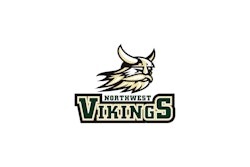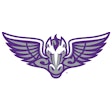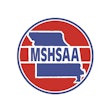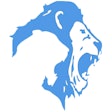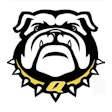
How do we increase new membership sales? How do we improve retention? How do we get more members to participate in ancillary programs?
These are just a few of the common questions we continually ask when running our facilities. Then the coronavirus pandemic heaped all sorts of unknowns onto our already full plates. Faced with these ongoing and evolving challenges, we need to have an effective way to uncover viable solutions. Unfortunately, problem-solving can be so overwhelming that we don't even know where to start.
Just like any other task, employing a system makes problem-solving a little less daunting.
A while back, I learned an incredible five-step problem-solving process from Emmett Williams, the president of Myzone. I have used this process countless times with clubs I have owned and operated, as well as companies with which I have consulted. In fact, it's one of my favorite strategies when consulting. Not only do we solve immediate problems, but clients gain a new problem-solving method moving forward.
It's an effective process that yields fantastic results — and an absolute game-changer when facing even the biggest challenges. Here are the five steps:
1. Define the problem
The first step to solving a problem is properly defining it.
A great way to do this is by utilizing a "should/however" statement: "We should have X, however we only have Y." Using this method makes the problem as clear as possible, gets team members on the same page and leads to more accurate and effective solutions.
Let's assume your active-user rate is lower than you would like it to be. We all know that when members regularly use the facility, they spend more time and money and are more likely to remain members. In this example, let us define an active user as someone attending the facility at least two times per week. If you state, "We need to have members come in more," it is vague and open-ended. When you convert the statement to a should/however statement, such as, "We should have an active-user rate of 80 percent, however we only have an active-user rate of 50 percent," you make the problem crystal clear and create a tangible goal.
2. Divergent thinking
The second step involves stimulating the creative (right side) part of the brain.
In this step, the goal for the team is to brainstorm solutions to the problem statement. Get as creative and as crazy as possible. Remove the barriers of time, money, resources and realism. In addition to really stimulating the creative part of the brain, this phase of the process is fun and engaging. It encourages your team to actively participate.
Back to our should/however statement. A solution proposed in this divergent thinking phase might be to provide an app that members use to schedule a car service to pick them up and bring them to the gym. Think "Gym Uber." Or possibly a concierge robot that follows members around all day and makes them attend. Ideas in this phase are not designed to be feasible, they are designed to get the creative juices flowing.
3. Convergent thinking
The third step involves the analytical (left side) part of the brain.
Now things get real. Take the brainstorm generated during the previous step and turn it into more realistic and feasible ideas.
Assume your team comes up with a dozen off-the-wall ideas. Take those ideas and list them on a white board. Collectively analyze the ideas and pick out parts that might be feasible, or modify the crazy ideas to be more realistic.
While providing a car service might not be realistic, maybe you could put together an accountability carpool program. While personalized robots forcing you to come in is probably unrealistic and a bad idea, it may lead your team to think of something such as an automated reminder system that alerts members when it's time for them to come to the facility.
The goal is to end with three to five potential solutions to the problem.
4. Score and decide
The fourth step is to score each of those potential solutions on a scale of 1 to 10, with 10 being the highest.
Solutions are scored in the following three categories: ease of implementation, impact and realism. Add up the category scores for each solution, and the one with the highest score is the first to be implemented.
With the automated reminder solution, you might check your member management software and discover it has the capability to do that. A survey shows that an overwhelming number of members say a reminder would motivate them to come in.
Since the software is able to perform an automated reminder easily, the ease of implementation is scored a 10. This is a realistic option as well, so that category scores a 10. Finally, based on the team discussion, you score the impact as a 10. Because the total of 30 is the highest possible score, this is the idea to go with first.
The great part about a scoring system is that is makes things concrete and easily comparable.
5. Beta test
Even with a perfect score in step four, the only way to be certain that implementation is paying off is to objectively test.
At this point, take a group of members and start sending them automated reminders. Over time, track the usage rate of members who receive reminders versus those who don't to assess whether the reminders are increasing attendance. If usage improves, continue the reminders and implement them facility-wide. If not, try implementing the idea that had the second-highest score or repeat the entire process.
These five steps not only get top-notch results, they also allow your team to get involved in the process. Team involvement leads to higher engagement, more creativity and ultimately more buy-in. When the team's ideas are implemented and proven to be effective, the result is a facility more regularly filled with motivated members and satisfied staff.
This article originally appeared in the November|December 2020 issue of Athletic Business with the title "5 steps to problem-solving success." Athletic Business is a free magazine for professionals in the athletic, fitness and recreation industry. Click here to subscribe.




















